As an avid traveler, I have much experience with backpacks, travel bags, and luggage. I’ve been traveling for years and learned that secure backpack straps are essential.
When you’re on the road as much as I am, you learn something about what works and what doesn’t. One of the most annoying problems I’ve encountered is backpack straps that won’t stay in place.
There’s nothing worse than constantly having to adjust your straps. When you arrive at your destination, you find your backpack straps have fallen off your shoulders. Through trial and error, I’ve discovered some tried-and-true methods for securing backpack straps.
In this article, I’ll share some tips to keep your backpack straps securely in place. These tips will help you stay comfortable no matter where your adventures take you. So, let’s get started.
Why Secure Backpack Straps is Important
Unsecured backpack straps pose a safety risk and can lead to discomfort during travel. Understanding the significance of securing backpack straps ensures a seamless and enjoyable journey.
Over the years, I’ve found several effective ways to keep backpack straps securely in place.
First, tighten the straps so the pack sits close to your back. Any slack allows the straps to slip and shift, jeopardizing the security of your gear.
Second, use strap clips, ties, or velcro fasteners. I like to pack a few adjustable strap clips, gear ties, or velcro fasteners to bind excess strap lengths. These are easy to attach and remove but hold firmly in place. You can find these in most outdoor stores or make your own with paracord or velcro strips.
Another tip is to tie off any excess strap length around the shoulder strap or pack frame. Simple knots like the bowline knot or trucker’s hitch work well for this. Just leave enough slack so the knot can be easily untied when needed.
For heavier packs, sternum and hip belts are a must. The straps on your chest spread out the weight, and the belts on your hips carry most of it. Both significantly improve comfort and stability. Look for packs with padded, adjustable sternum and hip belts for the best fit. No matter the pack, securing those straps makes a difference in how it handles.
How do you secure backpack straps for travel-checked
Securing your backpack straps for travel is essential to prevent damage and keep your belongings safe. You last want a strap to slip off your shoulder when navigating crowded airports, busses, and train stations with a heavy pack!
Here, I mentioned steps to secure backpack straps for travel-checked
1. Secure Hanging Straps
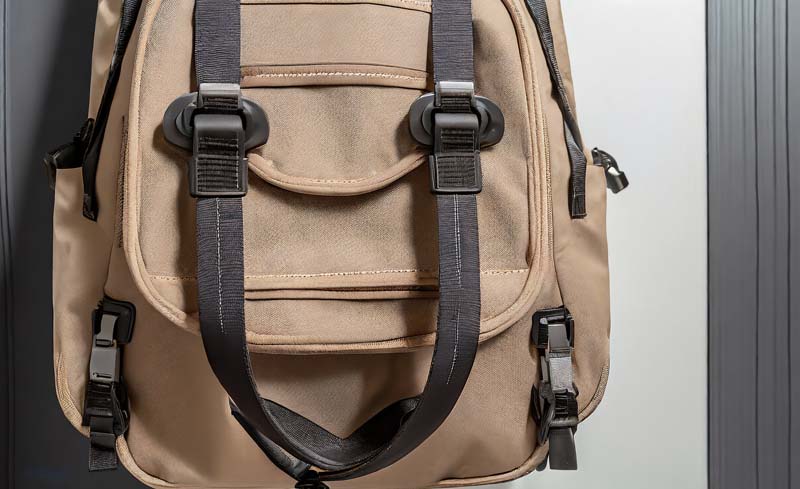
One of my favorite methods is using strap keepers, elastic bands explicitly designed for holding straps in place. Just loop the excess strap through the keeper and pull it. These come in a variety of sizes for different strap widths. They’re inexpensive, lightweight, and do a great job of keeping straps managed.
They can also work in a pinch if you don’t have any strap keepers, hair ties, rubber bands, or twist ties. Wrap the strap a couple of times and tie it off. These may last less time than dedicated strap keepers but will do the job when needed.
For heavier straps, especially shoulder straps, carabiners are a solid option. Clip the excess strap back onto itself or another part of the strap. Carabiners let you quickly release the strap or securely hold it in place.
Some backpacks have special holders or pockets where you can tuck the straps away. If your pack has these features, use them to keep straps in check in a very streamlined manner.
2. Tie Backpack Straps
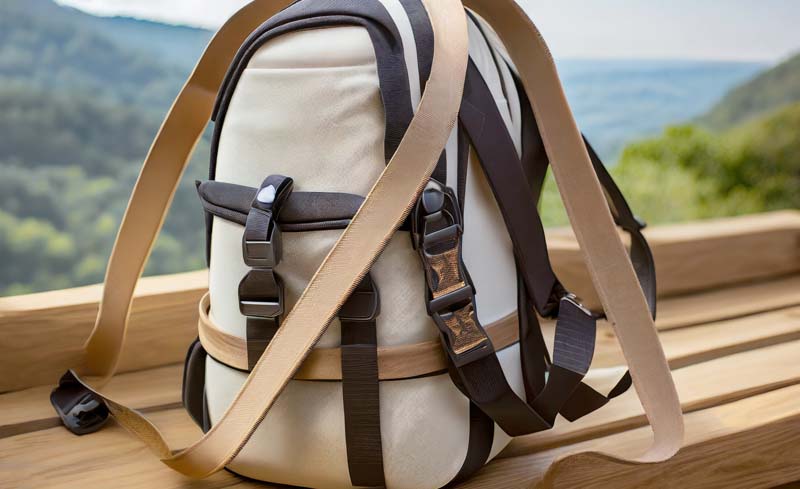
One of the most straightforward solutions is to tie the straps across your chest. I use a sturdy cord, rope, or strap to securely tie the two shoulder straps together, preventing them from sliding off. You can cinch the straps as tight as needed for maximum security and adjustability. It is my go-to method when hauling a heavy load or navigating rough terrain.
Another option is to buckle the sternum strap if your backpack has one. The strap across your chest connects the shoulder straps to distribute weight and prevent slippage. If your pack doesn’t have a sternum strap, you can buy one and attach it to your shoulder straps.
For lighter loads, you can also tie knots in the loose ends of the straps to shorten them and create a snugger fit. When the straps loosen, the knots catch and stop them from slipping off your shoulders. It’s a simple solution but effective in a pinch.
3. Secure Buckle Waist Strap
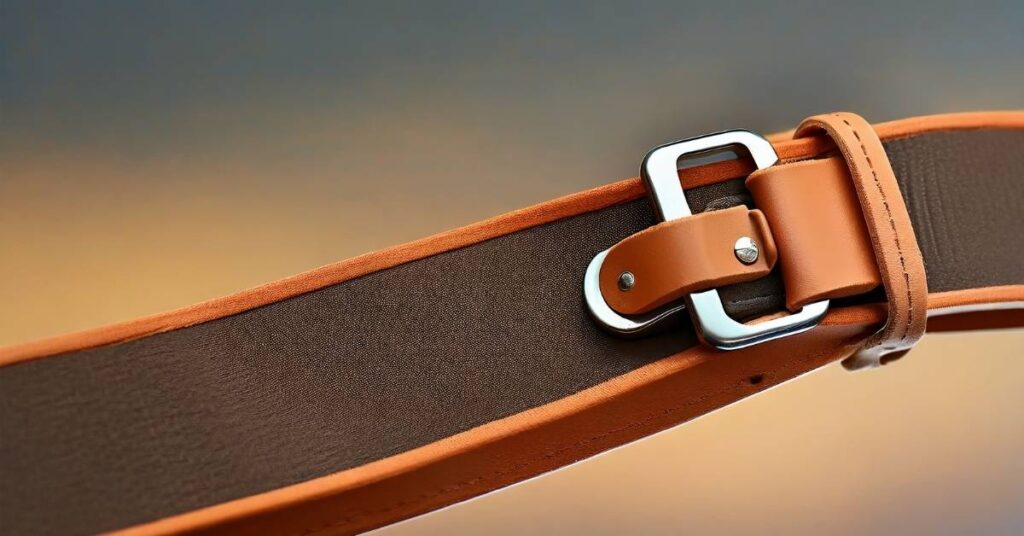
I always tighten the waist strap before hiking or taking a long walk. Put the strap through the buckle and pull it around your waist until it feels comfortable. The waist strap spreads the weight onto your hips, not just your shoulders. It prevents strain during long distances. It also keeps the pack close to your body.
It helps you maintain your balance better, especially on uneven terrain.
On challenging hikes, I add security by using both the waist and sternum straps. The sternum strap prevents the shoulder straps from sliding off sideways. When I fasten both straps, my backpack feels like part of me, and the weight disappears. I can move freely without worrying about my pack shifting or bouncing around.
At first, using all the straps and buckles may seem unnecessary. But when the pack is loaded, you’ll appreciate how the waist and sternum strap work together. They make it feel weightless and keep everything balanced and secure. Experienced backpackers know that an unbalanced pack that won’t stay put is the worst! Buckling those straps can make all the difference.
4. Zipper Security
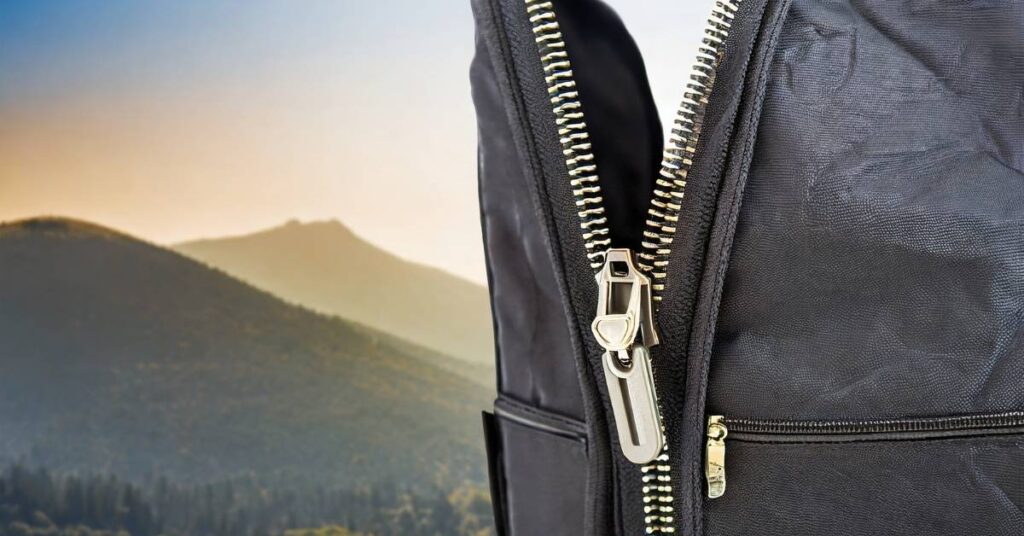
When I first started traveling, I paid little attention to how I adjusted the straps on my pack. I would throw it on, cinch everything down haphazardly, and be on my way. It didn’t take long for me to realize that was a mistake. The loose backpack strap caught on things and became twisted and uncomfortable. The weight wasn’t evenly distributed on my back and shoulders.
Now, I take the time to carefully adjust each strap before heading out. I tighten the shoulder straps so most of the weight sits high on my back, then lock them into place. I fasten the strap across my chest to stop the shoulder straps from slipping. I secure any loose ends with the strap keepers on my pack.
I sometimes put a zipper through the straps and pads to increase security in busy areas. It prevents anyone from undoing the straps to access the contents of my bag. It may seem overly cautious, but peace of mind is essential when traveling.
Make sure all straps and clips on your backpack are adjusted and secure. It will help you wear the backpack for long periods and distribute the weight properly. It will also deter any unwanted access. If you spend more time adjusting the straps, it will improve your travel experience.
5. Bring Electronics & Power Cords
One of my favorite methods is using straps. You put These big rubber bands around the straps to hold them together. The strap keepers keep them stable, stopping them from sliding off my shoulders. They’re very lightweight and inexpensive, so I always pack a few pairs.
I’ll put the straps in a unique sleeve or compartment when I have electronics like a laptop or tablet. It does two things simultaneously: it keeps the straps secure and adds padding for the electronics. Some backpacks have straps or clips on the back panel to hold the shoulder straps in place.
As a last resort, you can always tightly tie off the straps together with a cord, string, or zip tie. Just be careful not to tie them too tight, or you may have trouble getting them undone again! Keeping your backpack straps secure is essential to ensure your pack lasts long.
How do you secure Backpack Straps for Carry-On Luggage?
When you’re carrying your luggage at airports, loose straps can be annoying and unsafe if they get caught. Here are my top tips for keeping those straps in check.
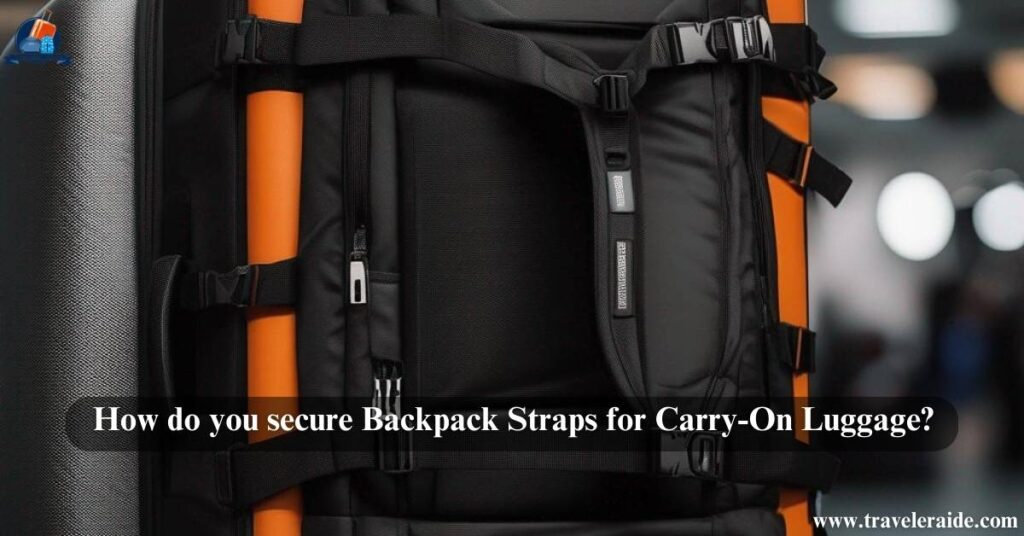
Use the built-in strap holders.
Backpacks often have unique loops, buckles, or Velcro to secure extra straps. If your pack has these, use them! Wrap the straps around, through, and attach them to themselves to get them out of the way. These stop the straps from swinging, but you can still reach them to make adjustments.
Tuck straps into the shoulder straps
If your bag doesn’t have strap holders, you can tuck the loose ends behind the shoulder straps. Tighten the straps, lift the shoulder straps a bit, and fold the loose ends underneath. Lower the shoulder straps to secure them. It works best if your shoulder straps are padded. You may need to readjust the tucked straps occasionally, but this trick can work in a pinch.
Use small carabiners
Invest in a few lightweight carabiners to clip those stray straps together. Attach the carabiner to the strap loops or around the extra strap to keep it in place. Carabiners give you the flexibility to unclip the straps when needed. Find aluminum carabiners that can hold backpack straps securely. They should be rated for 50 to 100 pounds.
Add strap keepers
If your backpack doesn’t have strap management options, you can buy strap keepers to attach yourself. You can use elastic bands with Velcro or cord locks to hold straps in place. Adhesive strap holders also stick directly to your pack to tie up straps. These are very affordable and can be found at most outdoor retailers.
Use these methods when you arrive to keep your backpack straps organized and secure.
Tips for Secure Backpack Straps
As an avid traveler, I’ve learned a few tricks over the years for keeping backpack straps secure. Loose straps flapping around can be annoying and, in some cases, even dangerous. The last thing you want is for a strap to catch on something as you’re walking through a crowded place.
Use strap keepers
I like to use strap keepers to manage loose backpack straps. They can also be called strap holders or strap clips. These handy little devices clip your straps together to keep them in place. I like to attach one strap keeper at the top, middle, and bottom of my backpack straps. I can adjust the straps without them twisting or tangling.
Tie straps together
You can tie your backpack straps together using various knots if you don’t have any strap keepers. I’ve used bow knots, slip knots, and zip ties to secure my straps in a pinch. Keep the knots tight enough, or you may need help quickly undoing them when required. Zip ties can also be challenging to remove and may damage some strap materials.
Strap management loops
Backpacks often have straps that can be managed with loops, buckles, or elastic bands. If your bag has these features, take advantage of them. Thread the loose strap end through the loop or strap and pull it snugly. It gets the straps up and out of the way tidily.
Consider strap length
Excessively long backpack straps are more prone to coming loose or dangling. When buying a new backpack, consider the strap length and how much you need to adjust it. For most people, straps that adjust down to around 15 to 20 inches in length are enough. The more you reduce extra straps, the easier to keep everything secure.
Follow these tips to keep your backpack straps tight, tidy, and secure on all your adventures.
Conclusion
I’ve traveled the world with my backpack for many years. I’ve discovered some tricks to keep the straps from slipping along the way.
With a few changes and extra gear, you can enjoy your adventures without always fixing your backpack. I have used these techniques for hiking in the mountains, exploring cities, and more.
So follow the steps above to secure your backpack. It can impact your overall travel experience.
Remember, keeping things neat, secure, and thoughtful is critical. Treat your straps like partners, not accessories. With a few tucks, knots, and a touch of MacGyvering, you’ll check your bag confidently.
Let me know if you have any other questions in the comments below.

Hey, I’m Dorothy E. Turner! I’ve spent years exploring the world and diving deep into the travel scene. Along the way, I’ve developed a real knack for understanding what makes a great travel backpack. I’m passionate about sharing my expertise to help fellow travelers find the perfect backpack for their adventures.

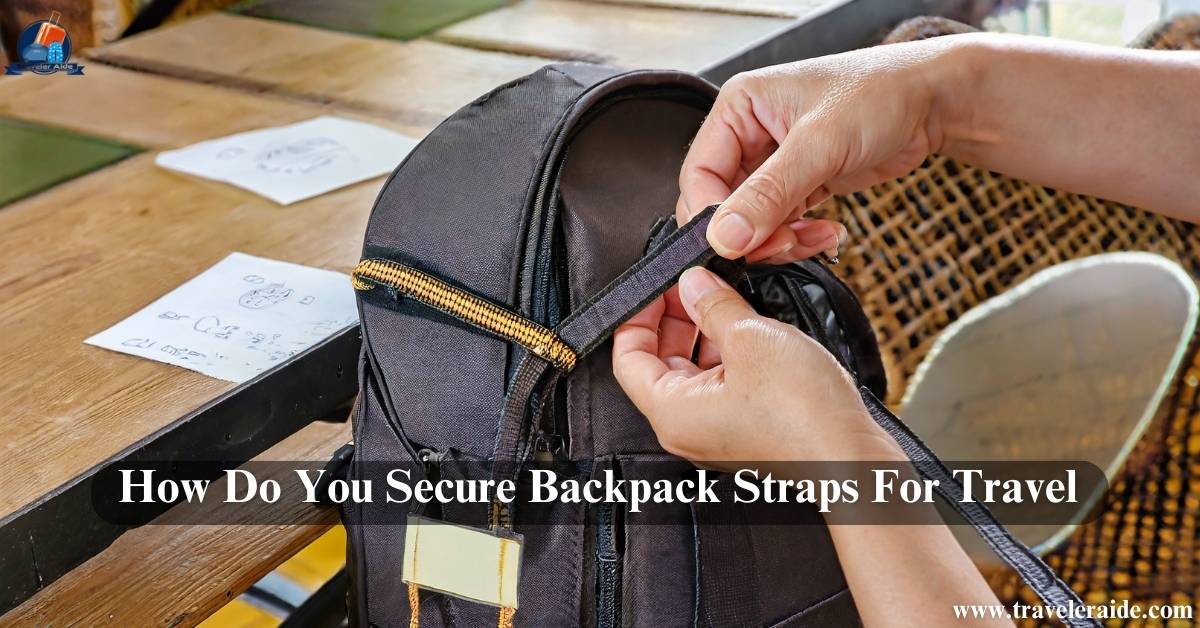
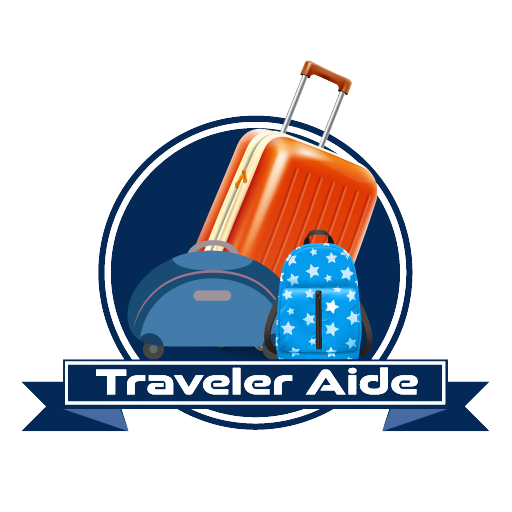
3 thoughts on “How Do You Secure Backpack Straps For Travel?”